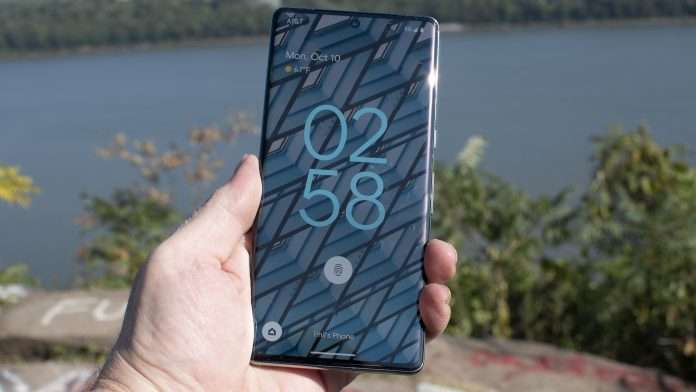Google has just released the Pixel 7 and 7 Pro, so we’re still a long way from seeing the next generation of Pixel phones. However, rumors about what we could see when the Series 8 models come are already circulating.
Here’s everything we know so far, as well as our want list for the Google Pixel 8 and 8 Pro.
When will the Google Pixel 8 be released?
There is no official release date for the Pixel 8 models at this time, but every Pixel flagship has been introduced in October on the dot, so it feels very safe to assume the Pixel 8 series will appear in October 2023.
That’s also roughly what a Pixel product roadmap acquired by Android Authority suggests, with the Pixel 8 and 8 Pro launching “later in 2023.”
How much will the Google Pixel 8 cost?
Again, Google has not released any information on the prospective price tags for the series-8 gadgets. Of course, we may utilize the previous models to estimate how much you’ll need to save. Here’s how they arranged themselves:
- Google Pixel 7: $599/£599
- Google Pixel 7 Pro: $899/£849
- Google Pixel 6: $599/£599
- Google Pixel 6 Pro: $899/£849
This demonstrates that Google has been fairly rigid in its price policies. If that trend continues in 2023, which we believe it will, the Pixel 8 should cost $599/£599 and the Pixel 8 Pro should cost $899/£849.
Read also : Best Cheap Smartphone under 200$ in 2023
What about the Pixel 8’s specs and features?
Obviously, with the Pixel 8’s release date still so far away, there isn’t much to go on in terms of new components, designs, or features. However, there are several rumors, the primary one focusing on the chipsets that will be utilized in the forthcoming versions.
Dutch blog GalaxyClub has stated that work on the third iteration of Google’s Tensor chipset is already far into production, indicating it should follow the Pixel 8 launch. The source claims that Samsung will be the manufacturer once more, with a chip with the code S5P9865 already surfacing on test boards. This is consistent with the earlier Tensor 1 and 2 processors, which were designated S5P9845 and S5P9855, respectively.
With the Tensor 2 in the Pixel 7 and 7 Pro already proving to be more energy efficient and powerful than the previous generation, there is optimism that the third version will push things even farther when it comes.
After digging into “publicly available code sources,” WinFuture discovered additional solid information regarding the two phones. The site discovered the code names ‘Shiba’ and ‘Husky’ for two phones. Google has previously used animal names for Pixel flagships, such as Cheetah and Panther for the Pixel 7 series, thus it appears that this pertains to the Pixel 8 devices.
According to the code, both phones will employ the ‘Zuma’ chipset, which uses the same modem as the Tensor 2 – yet more indication that we’re looking at the future Pixels. Both phones run Android 14, which is not surprising.
Surprisingly, both phones have 12GB of RAM, and the display resolution is similarly high: 22681080 for Shiba and 28221344 for Husky, implying that the latter is the Pro model.
Those two codenames also appear in the Pixel product roadmap, but with the added note that, while the Pro (Husky) will remain roughly the same size, the regular 8 (Shiba) will have a “smaller display and overall smaller form factor” – likely a welcome change for many who’ve missed the more compact Pixel phones of old.
We’re so close to launch that these specifications are unlikely to be finalized, and it’s also conceivable that these two devices are created for internal testing and don’t reflect final Pixel 8 specs at all – but they do offer us an indication of what to anticipate.
Given how fantastic the Pixel’s cameras have always been, developer Kuba Wojciechowski has found a delicious speculation concerning the Pixel 8’s cameras. They published source code from the Pixel camera app, implying that the upcoming phone would employ staggered HDR:
Google's 2023 flagship Pixels to include support for staggered HDR – 🧵 pic.twitter.com/ZfWtwQBykY
— Kuba Wojciechowski⚡ (@Za_Raczke) December 19, 2022
Long story short, courtesy of Google we got a clean, unobfuscated version of Google Camera Go, that includes references that seemingly confirm that flagship Pixels in 2023 – Husky and Shiba – will support staggered HDR. pic.twitter.com/YdaWTlGznN
— Kuba Wojciechowski⚡ (@Za_Raczke) December 19, 2022
Currently, Pixel phones do not support staggered HDR, which is a feature that allows several exposures to be captured at the same time while using the same pixels.
“This permits attaining the same effect as standard HDR but without the extra capture time or the risk of the photographs being fuzzy due to misalignment of frames caused by movement,” Wojciechowski said on Twitter.
In our opinion, anything that improves the already great Pixel camera is a good thing.
There’s also a potential that Google, like Samsung and certain Chinese competitors, may include an under-display camera. LetsGoDigital discovered a Google patent from 2021 proposing a revolutionary approach to the technology, which includes a rotating mirror under the display capable of aiming either towards a camera lens or at a second display. When you require the camera, light is reflected into the lens; when you don’t, light is reflected from the auxiliary display to fill the void.

Recently, Google submitted a second patent (also noticed by LetsGoDigital) for under-display cameras that use different (and possibly less expensive) technology to achieve the same goal. This version employs a multi-layered transparent display, which is more in line with other implementations.
Surprisingly, the patent names Sangmoo Choi by name – a former Samsung display developer who has now been at Google for nearly three years, but likely had expertise with Samsung’s early work at under-display camera technology.
![]()
There’s no definite evidence that either patent is for the Pixel 8 series, but it’s possible that it’s being prepared for a flagship shortly.
Wishlist of what we’d like to see in the Google Pixel 8
The class of 2022 has pleased us, but here are several things we’d like Google to improve in future generations.
120Hz refresh rate on all models
These days, this is a very simple one. With so many mid-range Android phones sporting 120Hz refresh rates to improve scrolling, it seems logical for both the Pixel 8 Pro and ordinary model to offer this functionality. It’s already there in the Pixel Pro 7 and Pixel Pro 6, but we’d like to see the Pixel 7’s 90Hz rate improve when its replacement arrives.
Faster charging speeds
The primary complaint in both our Pixel 7 and Pixel 7 Pro evaluations was the sluggish recharge times. In an age where phones can charge from 0% to 100% in around half an hour, the Pixels appear sluggish. As a result, we believe it is critical that Google fix issue with the Pixel 8 devices.
Improved facial recognition
While the Pixel 7 Pro’s new face recognition unlock function wowed us, the Pixel 7 still needs more time in the oven. Hopefully, the year between launches will result in a stronger showing for the Pixel 8.
Lose the weight!
Ok. We’re not condemning the Pixel 7 Pro for its size, but at 162.9 x 76.6 x 8.9mm and 212g, it’s big-boned. We’re not sure whether it’s a thyroid problem, but we’d want to see a slimmer Pixel 8 Pro chassis. True, most powerful phones these days are pretty bulky, but for the sake of our wrists, we can only hope for lighter and more compact designs in 2023.


